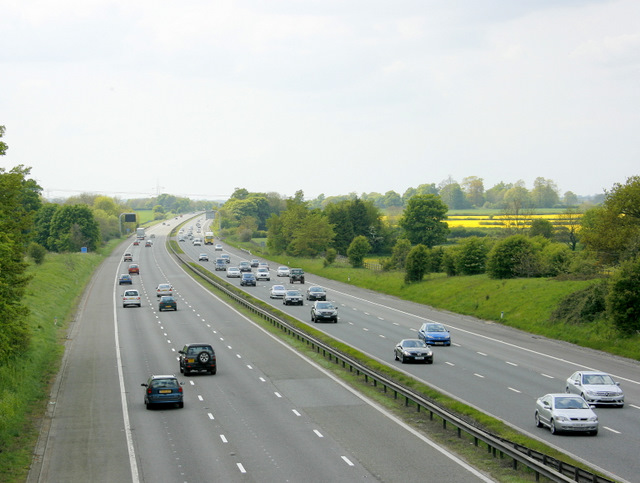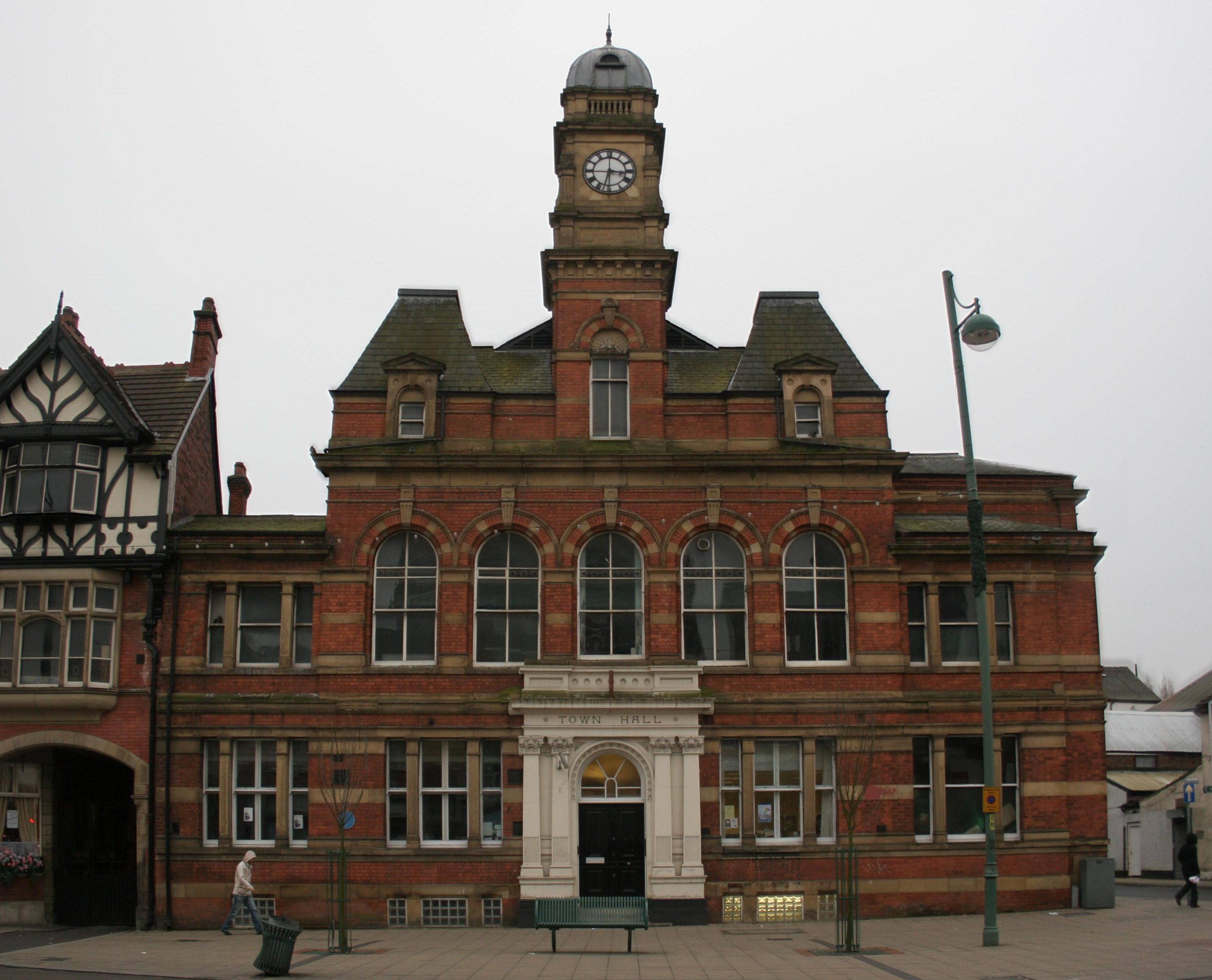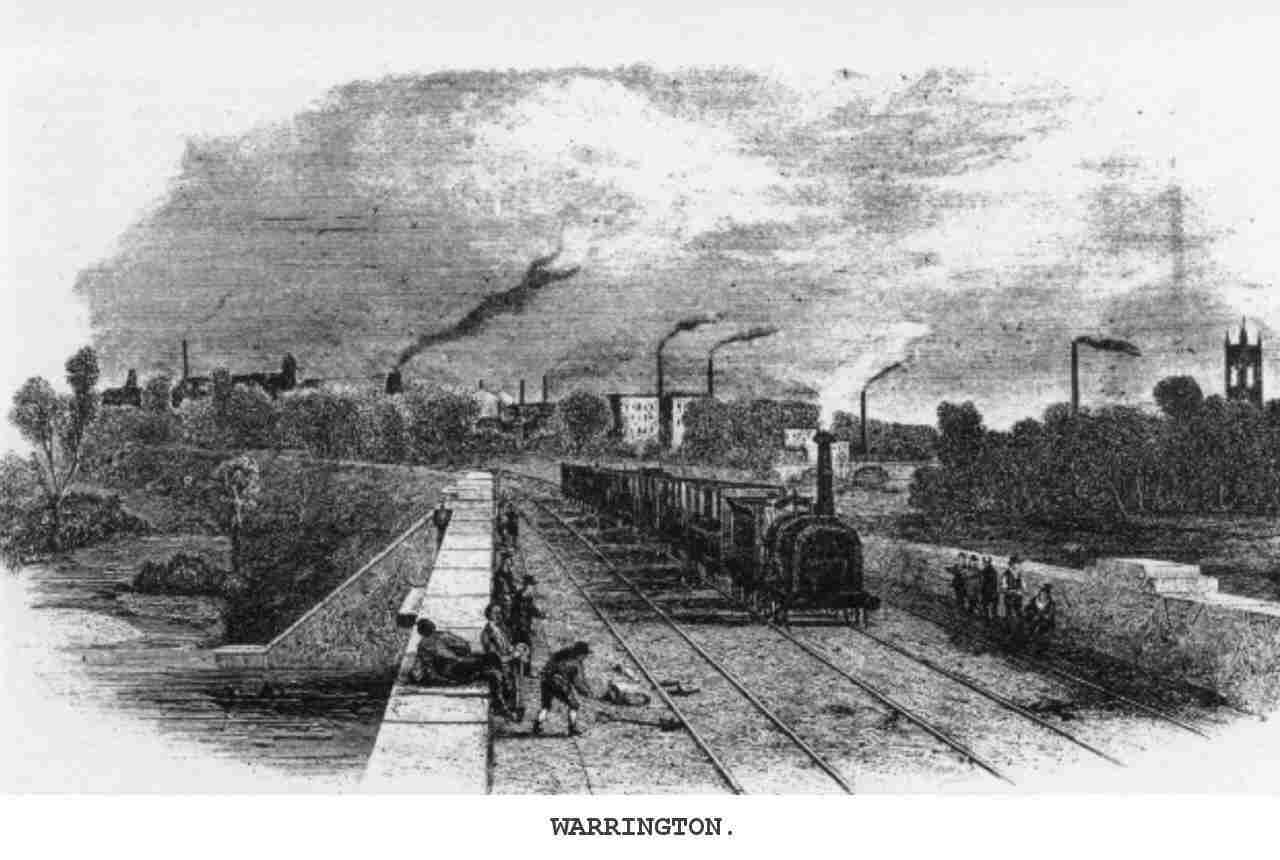|
A580 Road
The A580 (officially the Liverpool–East Lancashire Road, colloquially the East Lancs) is the United Kingdom's first purpose-built A road. The road was officially opened by King George V on 18 July 1934. Despite its name, the actual road runs through the modern day metropolitan counties of Merseyside and Greater Manchester which were historically in Lancashire when the road was built until 1974. Notable towns and cities along the route include Liverpool, Kirkby, St. Helens, Leigh, Swinton and Salford. It was described as "Britain's biggest road" at the time. Purpose The road was built to provide better access between the Port of Liverpool and the industrial areas of East Lancashire around Manchester. The new high-quality trunk road would supersede the indirect and heavily built-up A57 through Prescot, Warrington and Eccles. Journey times for road haulage would be reduced to under an hour. This road was built with a 1930s Dutch-style cycle path running its entire length ... [...More Info...] [...Related Items...] OR: [Wikipedia] [Google] [Baidu] |
Kirkdale, Liverpool
Kirkdale is a district of Liverpool, Merseyside, England, and a Liverpool City Council Ward (country subdivision), ward that covers both Kirkdale and Vauxhall, Liverpool, Vauxhall. At the United Kingdom Census 2011, 2011 Census, the population was 16,115. Kirkdale is bordered by Bootle to the north, Walton, Merseyside, Walton and Everton, Liverpool, Everton to the east and Vauxhall to the south. History Kirkdale is a working class area with mainly Victorian architecture, Victorian terraced houses. From 1885 to 1983, it was part of the Liverpool Kirkdale (UK Parliament constituency), Liverpool Kirkdale constituency. Boundary Street was an ancient division between the township of Kirkdale and Liverpool before Liverpool's expansion took in Kirkdale in the 1860s. It thus separates Kirkdale and Vauxhall. Kirkdale was formerly a Township (England), township and chapelry in the parish of Walton-on-the-Hill, Lancashire, Walton-on-the-Hill, in 1866 Kirkdale became a separate civil paris ... [...More Info...] [...Related Items...] OR: [Wikipedia] [Google] [Baidu] |
Port Of Liverpool
The Port of Liverpool is the enclosed dock system that runs from Brunswick Dock in Liverpool to Seaforth Dock, Seaforth, on the east side of the River Mersey and the Birkenhead Docks between Birkenhead and Wallasey on the west side of the river. In 2023, the Port of Liverpool was the UK’s fourth busiest container port, handling around 900,000 TEUs of cargo each year, equivalent to over 30 million tonnes of freight per annum. It handles a wide variety of cargo, including containers, bulk cargoes such as coal, grain and animal feed, and roll-on/roll-off cargoes such as cars, trucks and recycled metals. The port is also home to one of the largest cruise terminals in the UK which handles approximately 200,000 passengers and over 100 cruise ships each year. The port has significant links to North America and the rest of Europe via the Irish Sea and Atlantic Ocean. It is the most significant port in the UK for transatlantic trade. The port's history spans over 800 yea ... [...More Info...] [...Related Items...] OR: [Wikipedia] [Google] [Baidu] |
Highways Agency
National Highways (NH), formerly Highways England and before that the Highways Agency, is a government-owned company charged with operating, maintaining and improving motorways and major A roads in England. It also sets highways standards used by all four UK administrations, through the Design Manual for Roads and Bridges. Within England, it operates information services through the provision of on-road signage and its Traffic England website, provides traffic officers to deal with incidents on its network, and manages the delivery of improvement schemes to the network. Founded as an executive agency, it was converted into a government-owned company, Highways England, on 1 April 2015. As part of this transition, the UK government set out its vision for the future of the English strategic road network in its Road Investment Strategy. A second Road Investment Strategy was published in March 2020, with the company set to invest £27billion between 2020 and 2025 to improve the ... [...More Info...] [...Related Items...] OR: [Wikipedia] [Google] [Baidu] |
Central Reservation
A median strip, central reservation, roadway median, or traffic median is the reserved area that separates opposing lanes of traffic on divided roadways such as divided highways, dual carriageways, freeways, and motorways. The term also applies to divided roadways other than highways, including some major streets in urban or suburban areas. The reserved area may simply be paved, but commonly it is adapted to other functions; for example, it may accommodate decorative landscaping, trees, a median barrier, or railway, rapid transit, light rail, or streetcar lines. Regional terminology There is no international English standard for the term. Median, median strip, and median divider island are common in North American and Antipodean English. Variants in North American English include regional terms such as neutral ground in New Orleans usage or boulevard in Vancouver, British Columbia. In British English the central reservation or central median is the preferred usage; i ... [...More Info...] [...Related Items...] OR: [Wikipedia] [Google] [Baidu] |
County Borough Of Salford
Salford was, from 1844 to 1974, a local authority district, local government district in the county of Lancashire in the northwest of England, covering the city of Salford, Greater Manchester, Salford. It was granted City status in the United Kingdom, city status in 1926. History Free Borough and Police Commissioners In about 1230, the vill of Salford, Lancashire, was created a free borough by charter granted by Ranulph de Blondeville, 4th Earl of Chester. The borough's government was in the hands of a Reeve (England), borough-reeve and portmote court. The reeve was elected by the burgesses at large, while the head of the Molyneux family of Sefton presided over the court as hereditary steward of the Salford (hundred), Hundred of Salford. The first modern local government was established in the area when the Manchester and Salford Police Act 1792 (32 Geo. 3. c. 69) created commissioners to administer the two towns. In 1843 the inhabitant householders petitioned the Privy Counc ... [...More Info...] [...Related Items...] OR: [Wikipedia] [Google] [Baidu] |
A6 Road (England)
The A6 is one of the main north–south roads in England. It runs from Luton in Bedfordshire to Carlisle in Cumbria, although it formerly started at a junction with the A1 road (Great Britain), A1 at Chipping Barnet, Barnet in north London, and is described as running from London to Carlisle. Running north-west from Luton, the road passes through Bedford, Bedfordshire, Bedford, bypasses Rushden, Kettering and Market Harborough, continues through Leicester, Loughborough, Derby and Matlock, Derbyshire, Matlock before passing through the Peak District to Bakewell, Buxton, Stockport, Manchester, Salford, Greater Manchester, Salford, Chorley, Preston, Lancashire, Preston, Lancaster, Lancashire, Lancaster, Kendal and Penrith, Cumbria, Penrith before reaching Carlisle. South of Derby, the road runs approximately parallel to the M1 motorway; between Manchester and Preston, it is close to the M6 motorway, M6 and M61 motorway, M61 motorways; and from Preston to its northern terminus ... [...More Info...] [...Related Items...] OR: [Wikipedia] [Google] [Baidu] |
Walton, Liverpool
Walton is an area of Liverpool, in Merseyside, England, north of Anfield (suburb), Anfield and east of Bootle and Orrell Park. Historic counties of England, Historically in Lancashire, it is largely residential, with a diverse population. History The name may derive from the same origin as Wales. The incoming Saxons called the earlier native inhabitants (the Celtic Britons) ''Walas'' or ''Wealas'', meaning "foreigner". Another possible etymology is ''Wald tun'', Old English for "Forest Town". Walton's recorded history starts with the death of Edward the Confessor, when Winestan held the manor of Walton. After the Norman conquest of 1066, Roger of Poitou included Walton in the lands he gave to his sheriff, Godfrey. In 1200, John, King of England, King John gave Walton to Richard de Meath, who left it to his brother, Henry de Walton. Henry's son William inherited the land, but died before his son Richard was of age, so Richard was made a ward of Nicholas de la Hose by the Robe ... [...More Info...] [...Related Items...] OR: [Wikipedia] [Google] [Baidu] |
East Lancashire Road - Geograph
East is one of the four cardinal directions or points of the compass. It is the opposite direction from west and is the direction from which the Sun rises on the Earth. Etymology As in other languages, the word is formed from the fact that east is the direction where the Sun rises: ''east'' comes from Middle English ''est'', from Old English ''ēast'', which itself comes from the Proto-Germanic *''aus-to-'' or *''austra-'' "east, toward the sunrise", from Proto-Indo-European *aus- "to shine," or "dawn", cognate with Old High German ''*ōstar'' "to the east", Latin ''aurora'' 'dawn', and Greek ''ēōs'' 'dawn, east'. Examples of the same formation in other languages include Latin oriens 'east, sunrise' from orior 'to rise, to originate', Greek ανατολή anatolé 'east' from ἀνατέλλω 'to rise' and Hebrew מִזְרָח mizraḥ 'east' from זָרַח zaraḥ 'to rise, to shine'. ''Ēostre'', a Germanic goddess of dawn, might have been a personification of both da ... [...More Info...] [...Related Items...] OR: [Wikipedia] [Google] [Baidu] |
Haulage
Haulage is the business of transporting goods by road or rail between suppliers and large consumer outlets, factories, warehouses, or depots. This includes everything humans might wish to move in bulk – from vegetables and other foodstuffs, to clothes, ore, coal, and other supplies. Haulage also involves the transportation of chemicals in large sealed containers, and the removal of waste. As the word implies, goods are loaded into large trailers or carriages and hauled between different locations. Traditionally, this was by large animals such as horses or oxen – where the practice may also be called cartage or drayage. However, in the modern age, this act is mostly performed by trains or trucks – with large shipping vessels acting as intermediaries for crossing oceans. Truck drivers on haulage shifts are typically male, and often work long and difficult hours with few breaks – regularly sleeping in their vehicles overnight and eating/showering at rest stops. It is expecte ... [...More Info...] [...Related Items...] OR: [Wikipedia] [Google] [Baidu] |
Eccles, Greater Manchester
Eccles () is a market town in the City of Salford in Greater Manchester, England, west of Salford, Greater Manchester, Salford and west of Manchester, split by the M602 motorway and bordered by the Manchester Ship Canal to the south. The town is famous for the Eccles cake. Eccles grew around the 13th-century Church of St Mary the Virgin, Eccles, Parish Church of St Mary. Evidence of pre-historic human settlement has been discovered locally, but the area was predominantly agricultural until the Industrial Revolution, when a textile industry was established in the town. The arrival of the Liverpool and Manchester Railway led to the town's expansion along the route of the track linking those two cities. History Toponymy The derivation of the name is uncertain, but two suggestions have been proposed. The received one is that the ''Eccles'' place-name is derived from the Romano-British ''Ecles'' or ''Eglys'' ( in Welsh language, Welsh means 'church'), which in turn is deriv ... [...More Info...] [...Related Items...] OR: [Wikipedia] [Google] [Baidu] |
Warrington
Warrington () is an industrial town in the Borough of Warrington, borough of the same name in Cheshire, England. The town sits on the banks of the River Mersey and was Historic counties of England, historically part of Lancashire. It is east of Liverpool and the same distance west of Manchester. The population in 2021 was recorded as 174,970 for the built-up area and 210,900 for the wider borough, the latter being more than double that of 1968 when it became a New towns in the United Kingdom, new town. Warrington is the largest town in the ceremonial county of Cheshire. Warrington was founded by the Roman Britain, Romans at an important crossing place on the River Mersey. A new settlement was established by the Saxons, Saxon Wærings. By the Middle Ages, Warrington had emerged as a market town at the lowest bridging point of the river. A local tradition of textile and tool production dates from this time. The expansion and urbanisation of Warrington coincided with the Industr ... [...More Info...] [...Related Items...] OR: [Wikipedia] [Google] [Baidu] |







